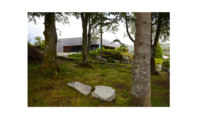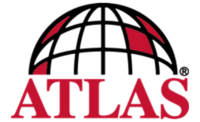Echelon Masonry Helps Arizona Town Efficiently Build Two State-of-the-Art Fire Stations Simultaneously




In Arizona, a unique arrangement between Paradise Valley and Phoenix brought state-of-the-art emergency response services to residents of Paradise Valley. The centerpiece of the agreement was the construction of two new emergency service buildings, Paradise Valley Fire Station No. 1 and Fire Station No. 2, which were constructed simultaneously. Per the agreement, Paradise Valley owns and maintains both buildings while the Phoenix Fire Department provides the necessary personnel and equipment.
Both firehouses were designed by Larry and Lance Enyart, the father and son partners and principals of LEA Architects. Among the firm’s core values is designing for sustainability, having designed more than 100 fire stations with numerous LEED Certified projects in their portfolio, including the first LEED Platinum Level Certified Fire Station in the United States.
Prior to striking the new arrangement with the city, Paradise Valley had a longstanding contract with Rural Metro Fire in Phoenix. The private, subscription-based fire protection service operated locally from within two converted single-family homes that no longer met current mission requirements for a modern fire station.
“The town's [Paradise Valley] goal was to build a 50 year-plus sustainable facility that would integrate with the surrounding natural environment as well as the residential and civic context specific to each of the two unique sites,” said Lance Enyart, AIA, LEED AP, who has extensive experience in designing civic and public safety projects. “Both projects also were designed to meet the unique mission requirements of the Phoenix Fire Department.”
To keep time and budget in check when building two specialty structures in two very different neighborhoods, designers chose to utilize a trusted provider and product: Echelon Masonry’s Trenwyth Trendstone ground face CMU. Echelon is the masonry brand of Oldcastle APG, a CRH company.
The design strategy for both emergency response buildings employed the use of Trendstone’s Berkeley, which features rich earth tones and terra-cotta exposed aggregates, as well as smooth face integral color concrete masonry, hollow clay tile units, and weathering structural steel and standing seam metal roof and wall panels.
Paradise Valley Fire Station No. 1 is on a natural desert hillside where the architects had to take grade issues into consideration. It is also located in a high-end, single-family residential neighborhood, so the aesthetics were very important to residents.
“The use of natural materials such as the ground face masonry and weathering steel combined with architectural strategies such as earth berming, taking advantage of a sloped site to allow for a split-level plan, and strategic orientation of shed roof forms were implemented to minimize the scale of the building and be sympathetic of the surrounding neighbors,” noted Enyart.
Paradise Valley Station No. 2, on the other hand, was in a municipal complex adjacent to the existing town hall and new court facility. While this building sought to complement the neighboring complex, it also was designed to integrate with the natural environment.
“In this case, the colors and textures of the Trendstone helped visually connect Paradise Valley Station No. 2 to the natural backdrop of Camelback Mountain,” Enyart said.
Echelon’s Trendstone units also were chosen as the best material for the interior of the buildings. “It is an interior material that is highly durable and will not scratch or snag the clothing of the emergency response personnel,” explained Larry Enyart, President of LEA Architects. “It also works in harmony with the ground concrete floors to provide considerable thermal mass for temperature stability and energy conservation.”
In addition to its contributions to energy conservation, Trendstone CMUs will help keep the interiors of the buildings clean – masonry doesn’t show dirt easily and cleans up well with little effort. It also won’t show signs of wear and tear.
The fire resistance of the material was also an important consideration as the buildings serve both as residences and storage for large, diesel-filled vehicles. The use of concrete masonry units to separate living spaces from the equipment bay helps protect first responders while also limiting the transmission of noise from one space to the other.
Enyart notes the Trendstone conveys an image of timelessness and solidity in these buildings. “The mason skillfully worked with the block in achieving the quality results we desired,” he said, adding, “The architectural design, quality of the product and construction execution represents a culmination of effective teamwork. From the outset of the project, we and the town of Paradise Valley viewed this project as an opportunity to enhance and support the neighboring community and provide an emergency response facility that would instill a sense of permanence and pride in the public and users.”
In addition, partnering with a single masonry manufacturer proved invaluable from a cost effectiveness standpoint. “The construction costs realized for both projects were on budget and very competitive when compared to construction costs of other fire stations of similar scope and complexity built around the same time, but not designed by LEA Architects,” said Lance Enyart. “Using similar materials for both projects undoubtedly offered value and economy of scale and contributed to the competitive construction costs achieved.”
LEA Architects were recognized for their design work on these buildings. Both Paradise Valley Fire Station No. 1 and 2 received top design awards from Fire Industry Education Research Organization (FIERO) and Design Excellence Awards from the Arizona Masonry Guild. Paradise Valley Fire Station No. 1 also received an environmental excellence award from Arizona Forward.
“We continue to be huge fans of masonry for its sustainability, sound dampening qualities and ability to blend in with the natural landscape,” said Lance Enyart. “We will specify these materials going forward to create modern, unique public buildings.”
Looking for a reprint of this article?
From high-res PDFs to custom plaques, order your copy today!









